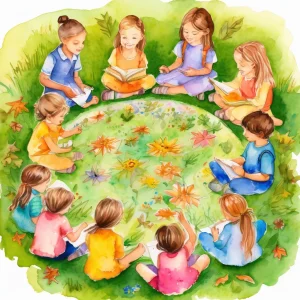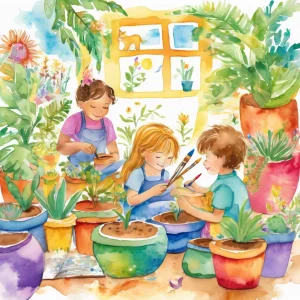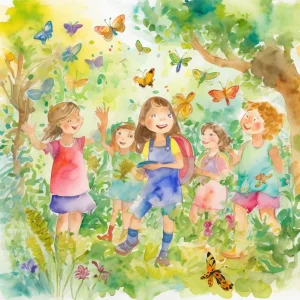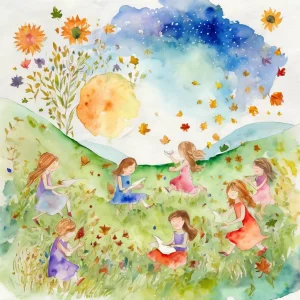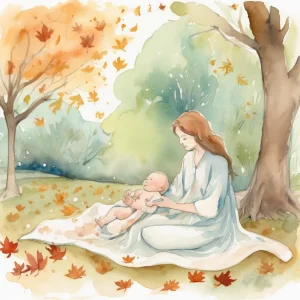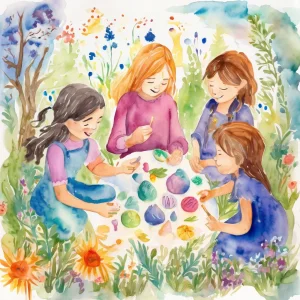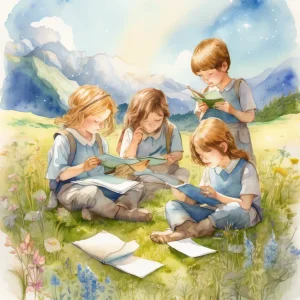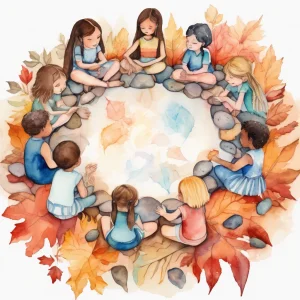Activity
Similar Activities
Enchanted Nature Collage Walk Adventure
Children’s Age: 1.5–2 years
Activity Duration: 5 – 10 minutes
Explore nature and boost creativity with the "Nature Collage Walk" activity designed for children. This engaging activity encourages communication, language development, and a love…
Activity Duration: 5 – 10 minutes
Animal-Inspired Plant Pots: Creative Nature Creations
Children’s Age: 3–6 years
Activity Duration: 20 minutes
Children will have a blast making animal-inspired plant pots, sparking creativity while learning about nature. Gather supplies like paint, pots, seeds, and soil to set up a creativ…
Activity Duration: 20 minutes
Enchanted Nature Scavenger Hunt with Family and Friends
Children’s Age: 6–10 years
Activity Duration: 15 – 30 minutes
Explore the "Family and Friends Nature Scavenger Hunt," a fun-filled activity tailored for children aged 6 to 10. This engaging hunt fosters observation skills, teamwork, and envir…
Activity Duration: 15 – 30 minutes
Whispers of the Seasons: Seasonal Collage Exploration
Children’s Age: 5–6 years
Activity Duration: 10 minutes
Engaging activity where children create collages representing different seasons.
Activity Duration: 10 minutes
Nature Scavenger Hunt to Boost Language Skills
Children’s Age: 0 month – 18 years
Activity Duration: 10 minutes
Let's go on a Nature Scavenger Hunt to find cool things outside! Grab a bag, a list of items like acorns and leaves, and maybe a magnifying glass. Find a safe spot, make the list, …
Activity Duration: 10 minutes
Enchanted Reflections: Peek-a-Boo Mirror Play
Children’s Age: 6 months – 1 year
Activity Duration: 5 minutes
"Peek-a-Boo Mirror Play" is a wonderful activity designed for infants aged 6 to 12 months, focusing on language development and self-awareness. With a handheld mirror and a soft bl…
Activity Duration: 5 minutes
Adventure Through the Obstacle Course Wonderland
Children’s Age: 2–3 years
Activity Duration: 15 minutes
"Obstacle Course Adventure" is an engaging outdoor activity tailored for children aged 24 to 36 months, focusing on language and motor skill development in a fun environment. By se…
Activity Duration: 15 minutes
Nature Sounds Sensory Experience for Infants
Children’s Age: 0 – 3 months
Activity Duration: 10 minutes
Engage infants aged 0 to 3 months in a Nature Sounds Sensory Experience to support language development by listening to and exploring nature sounds. You will need a soft blanket or…
Activity Duration: 10 minutes
Nature-Inspired Playdough Sculpting: Creative Nature Explorations
Children’s Age: 3–4 years
Activity Duration: 5 – 15 minutes
Children will enjoy a nature-inspired playdough sculpting activity designed to boost creativity, fine motor skills, and communication. Simply gather homemade playdough, nature item…
Activity Duration: 5 – 15 minutes
Enchanted Nature Scavenger Hunt and Discovery
Children’s Age: 6–10 years
Activity Duration: 30 minutes
The "Nature Scavenger Hunt and Data Collection" activity is designed for children aged 6 to 10 to enjoy a fun and educational outdoor experience. By exploring nature and collecting…
Activity Duration: 30 minutes
Enchanted Nature Scavenger Hunt with Communication Twist
Children’s Age: 3–4 years
Activity Duration: 20 minutes
The Nature Scavenger Hunt with Communication Twist activity is perfect for children aged 36 to 48 months to enhance their language and communication abilities while exploring the o…
Activity Duration: 20 minutes
Nature's Patterns: Exploring Geometric Symmetry Journey
Children’s Age: 4–6 years
Activity Duration: 10 – 15 minutes
Embark on the "Exploring Nature's Patterns" activity to discover geometric shapes and symmetry in nature. Children will enhance adaptive skills, language, and ecological awareness …
Activity Duration: 10 – 15 minutes




